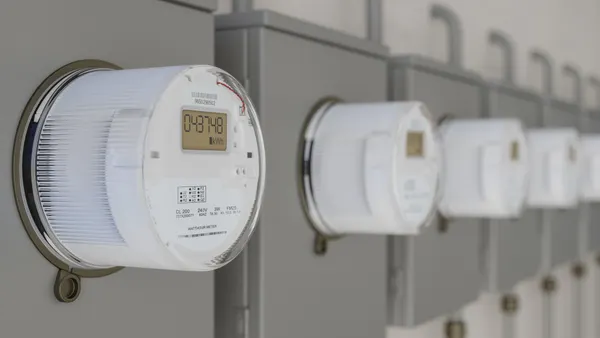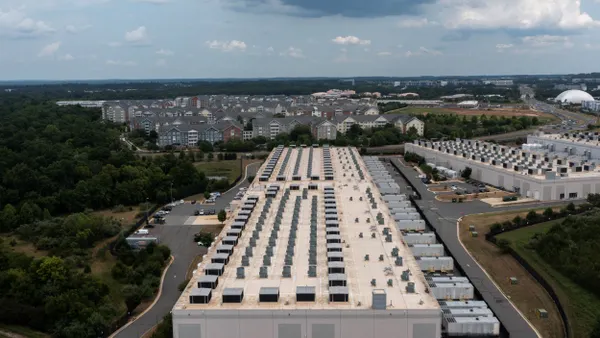Ohio is a very complex state, Asim Haque will tell you.
As chair of the Public Utilities Commission of Ohio (PUCO), he is keen to recount changes to the generating mix of the past decade, the way formerly vertically-integrated utilities have spun off or retired generating capacity and the ongoing legislative battle about renewable energy mandates.
Haque previewed the progress of PUCO's "PowerForward" initiative at the Smart Electric Power Alliance’s 2018 Grid Evolution Summit, calling it a deliberation that "will continue in perpetuity" to create an appropriate market place in the state for the next big thing in grid modernization.
"The goal is to create the regulatory environment that will allow for innovation to be deployed to customers," he told Utility Dive.
More aspirationally, Haque wants to see PUCO's initiative modernize the grid to provide value-added consumer services, creating the proper environment to deploy applications geared to a whole slew of customers, from baseline power users to energy-intensive manufacturers.
Speaking on a panel about the electricity future, Haque said the final product of PowerForward will in part define the role of the distribution system utility as a combination of wires services — providing distribution system build, ownership, operations and maintenance — and centralized integrating of distributed energy resources (DER).
Haque expects the final document of the grid modernization initiative to be released in the fall.
Grid efforts in the next five years
Ohio's PowerForward aims to prepare the field for the next great application "that will really add value to customer services." Haque called this aspirational of the initiative, while speaking on the SEPA panel about the largest potential drivers to the power system in the next five years.
"That’s our selling point for PowerForward, but there’s a lot of architecture that has to be developed," Haque said.
On the other hand, he saw the electrification of transportation as having "great, great legs" in Ohio, a heavy manufacturing state. While he acknowledged a rocky landscape when it comes to favoring renewable power — the U.S. Energy Information Administration notes 3% of the state’s net electricity generation is from renewables — he told the panel that he views electrification in transportation as "advancing the manufacturing space" and the state’s economy. Haque formerly served as assistant counsel to Honda, which he still uses as an example for the larger energy users in the state.
"This has little to do about the subsidization of renewable power and the free market principles that are espoused by the state legislature versus the governor," Haque said, referring to state legislative efforts to eliminate Ohio's renewable energy mandates.
"In Ohio, we've got our traditional distribution utilities that are going to play a huge, huge role," he said in an interview with Utility Dive.
He's "not convinced" that the state's traditional centralized generating units are going anywhere in the near-term, but he sees distribution utilities having a big impact in the longer term.
In the meantime, power system decarbonization "will not play in Ohio" over the next five years, according to Haque. The state is primarily fueled through coal and gas generation.
| Utility-Scale Net Electricity Generation (share of total) | Ohio | U.S. Average |
|---|---|---|
| Natural Gas-Fired | 31.9% | 32.5% |
| Coal-Fired | 53.9% | 25.2% |
| Nuclear | 10.4% | 21.0% |
| Renewables | 3.0% | 20.3% |
He also sees great barriers to grid modernization through "more efficient commodity delivery" based on the strong opposition from Ohio's consumer advocates of any spending increase from utilities. He sees that resistance persist in spite of the potential reductions to customers' bills that would "hopefully" manifest from power system efficiency upgrades.
"There's investment that's required to get there, but that investment will be fought at every level," he said during the panel.
Data access to all, or at least to more
Ohio's PowerForward initiative kicked off in the spring of 2017, to deliver actionable suggestions to PUCO on how to foster grid modernization technology adoption in the state. PUCO has built out its knowledge base in preparation of setting an initial table, which Haque said could be concerning distribution, operation or the market place.
"We can initially set that table, but we are going to have to vigilantly sort of monitor this space to ensure that we are continuing to achieve that objective of creating the right regulatory environment to allow for innovation to reach customers," Haque told Utility Dive.
One of the key elements is rooted in customer experience and customer satisfaction. One of the top-of-mind ways to achieve that is through transparency of information.
"We're talking about data and how we want data to be accessible to third parties and others," Haque said.
Existing pilot programs in the state have a ways to go in terms of utilizing the data collected through advanced metering infrastructure (AMI) to provide benefits to customers, Haque said.
To do a better job with data accumulated through AMI, utilities need to "make it accessible to third parties for use to work with customers, and to make it accessible to the customers themselves," Haque said on the panel.
"The iPhone of the electric system has not yet been invented."

Asim Haque
PUCO Chair
Speaking to Utility Dive, he painted a picture of a variety of users in Ohio and the different ways that data access could suit their needs, imagining a baseline of engagement with their energy usage. He referred to himself as a college student living on the "bare minimum," which he jokingly defined as having a TV and a phone. "A customer that's that potentially simple, okay, should be able to — in pretty close to real-time — monitor their usage," Haque said.
That example goes on to describe a whole world of customer applications; smart tech users that would want a better platform to manage the power to their lighting and appliances, heavy manufacturers like his former employer Honda and entire enclaves of electrification — Columbus, Ohio, for example, is working on a smart cities endeavor.
"The iPhone of the electric system has not yet been invented," Haque said, anticipating the arrival of a customer application "that will change the world."
"We are creating the sort of regulatory environment to allow for that incredible customer application on the electricity side to be deployed. And we want to be one of the states that’s a first adopter," Haque said.
PUCO won't select winners, but Haque sees the importance of creating a "competitive environment to really allow for that innovation to be fully deployed at the best possible prices to customers."
Ohio's grid modernization initiative is essentially a dialogue with PUCO that is meant to foster more agile regulatory thinking to anticipate the next big thing.
"If you're still in sort of the old paradigm, you won't be ready," Haque said. "And in Ohio, we'll be ready.














